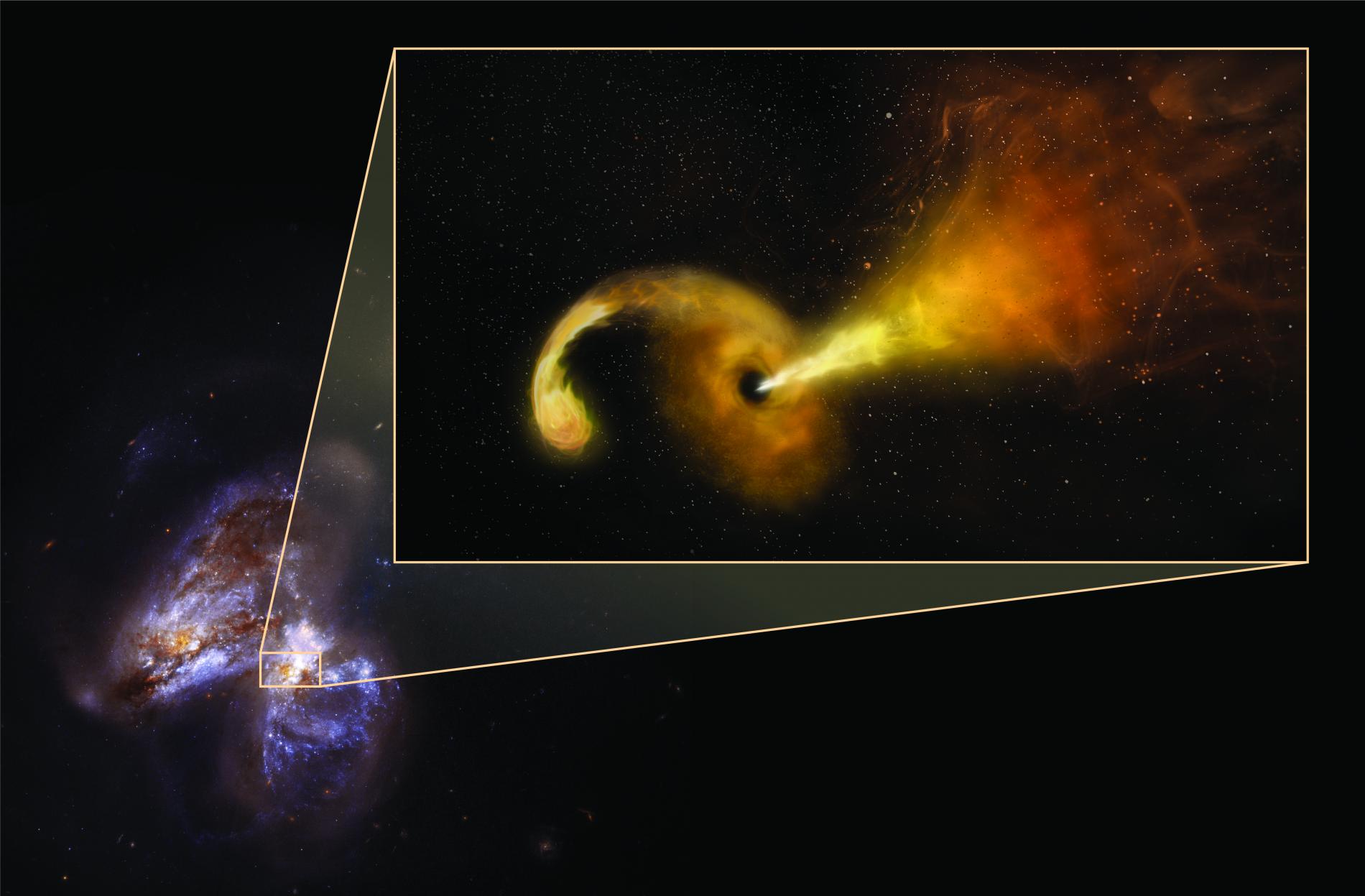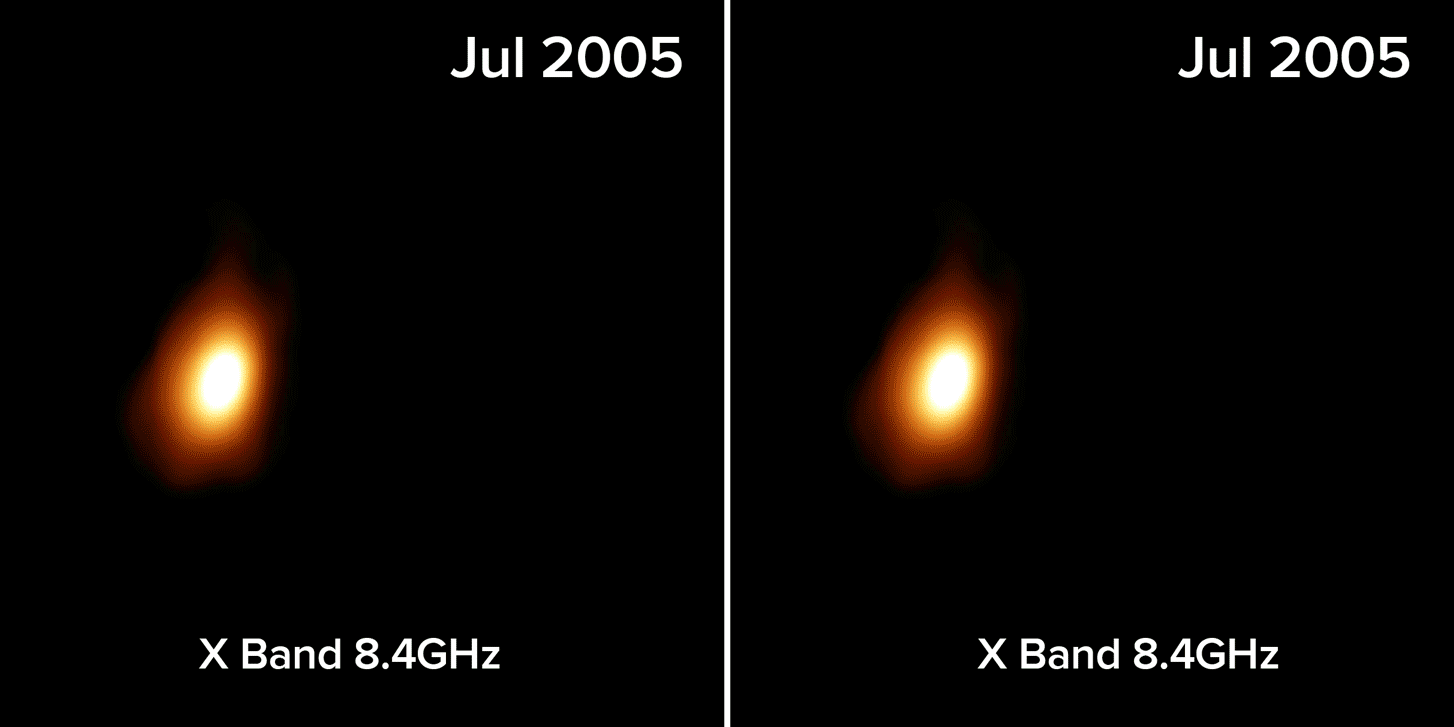Astronomers See Distant Eruption as Black Hole Destroys Star
First observation of the formation and expansion of a jet of material expelled by a supermassive black hole after destroying a star. The work, led by the University of Turku and the Institute of Astrophysics of Andalusia (IAA-CSIC), is published in the journal Science
In January 2005, a bright flash was detected in the nucleus of the Arp 299-B galaxy, which was considered a supernova explosion. However, ten years of observations at different wavelengths allowed to witness how the luminous region stretched and expanded, and to conclude that it is a jet of material expelled by the galaxy's supermassive central black hole after tearing a star. The results are published today in the journal Science.
WHEN THE STARS BREAK
According to theoretical models, in the tidal disruption events, in which a black hole destroys a star, half the mass of the star is ejected into space, while the other half is absorbed by the supermassive black hole. The sudden injection of material produces a bright flash (visible in gamma rays, X-rays and optical), followed by transient radio emissions and the formation of a jet of material that moves at speeds very close to that of light.
"To date only a few have been detected, but until now it has never been possible to directly observe the formation and evolution of a jet due to them," says Miguel Pérez-Torres, researcher at the Institute of Astrophysics of Andalusia (IAA-CSIC) who leads the work together with Seppo Mattila, from the University of Turku (Finland).

"Over time, the new object remained bright at the infrared and radio wavelengths, but not at the visible and X-ray wavelengths," says Seppo Mattila (University of Turku). The most likely explanation is that thick dust near the galaxy's center absorbed the X-rays and visible light, then re-radiated it as infrared."
The researchers used the Nordic Optic Telescope (NOT) in the Canary Islands and the Spitzer Space Telescope (NASA) to observe the object in the infrared, and made continuous observations with multiple radiotelescopes, including the European VLBI network (NVA) and the VLBA (Very Long Baseline Array), which combines antennas separated by thousands of kilometers and achieves a resolution equivalent to that of a telescope with the diameter of the earth.
Thanks to this monitoring, they could witness how the initial flash expanded in one direction, as would be expected for a jet, at a speed of about 75,000 kilometers per second, one-fourth of the speed of light. Thus, other possible scenarios for the phenomenon, such as the supernova explosion, could be ruled out, and the most probable one could be affirmed: the supermassive black hole of Arp 299-B, with some twenty million solar masses, had shredded a star more than twice the Sun's mass.

DORMANT BLACK HOLES
Most galaxies harbor supermassive black holes in their central regions, which contain up to billions of times the mass of the Sun. They are objects with such an intense gravitational field that even light cannot escape, and they show a typical structure composed by a disk of gas and dust - the accretion disk - that absorbs the material from its surroundings, and a pair of high velocity jets of particles that emerge from the poles.
"Much of the time, however, supermassive black holes do not devour anything," explains Pérez-Torres (IAA-CSIC). "Thus, tidal disruption events can provide us with a unique opportunity to study the vicinity of these powerful objects." Before this event we did not know exactly where the black hole was in the central region of Arp299-B. Now we know its exact location," he adds.
"Because the central regions of galaxies contain a lot of dust, which absorbs light in X and optical rays, it is possible that these events are much more common but have gone unnoticed." The finding in Arp 299-B could be the tip of the iceberg, and shows that if we search in infrared or radio we can discover many more and learn from them", concludes Mattila (U. Turku).
It is believed that such events were more common in the early universe, so their study helps to understand the environment in which galaxies developed billions of years ago.
The result has been possible thanks to an international team composed of thirty-six researchers from twenty-six institutions, coordinated by the University of Turku and the Institute of Astrophysics of Andalusia (IAA-CSIC). In Spain, scientists from the Center of Astrobiology (CSIC/INTA) and the University of Valencia have participated.
S. Mattila, M. Pérez-Torres et al. "A dust-enshrouded tidal disruption event with a resolved radio jet in a galaxy merger". Science (2018). DOI: https://doi.org/10.1126/science.aao4669
Instituto de Astrofísica de Andalucía (IAA-CSIC)
Unidad de Divulgación y Comunicación
Silbia López de Lacalle - sll[arroba]iaa.es - 958230532
http://www.iaa.es
http://www-divulgacion.iaa.es

